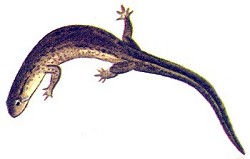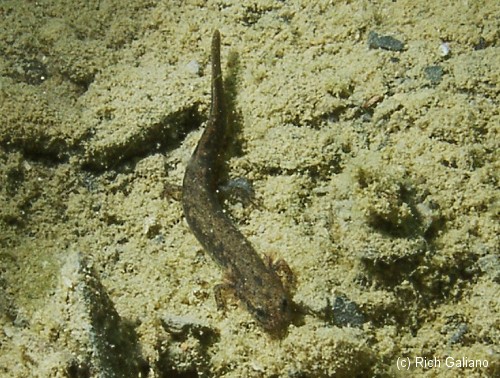Salamanders

many species
Salamanders are terrestrial as adults, but eggs and larvae are aquatic. Larvae have both gill slits and external gills. A few species are completely aquatic, retaining these features as adults. Some salamanders are boldly colored and patterned and easy to identify, but many are simply small and brown and very difficult to tell apart, like this one.

A tiny larval salamander at Dutch Springs. Possibly some kind of Dusky Salamander.

